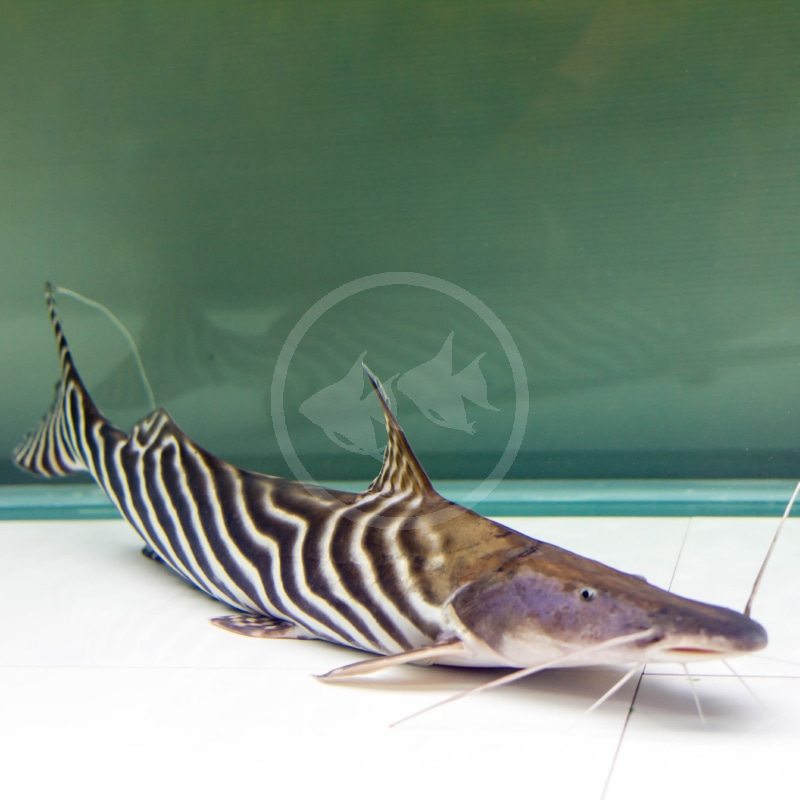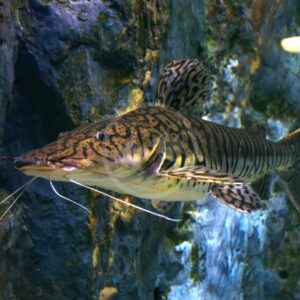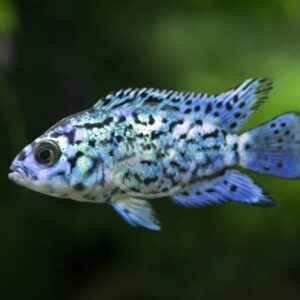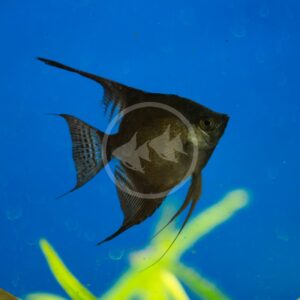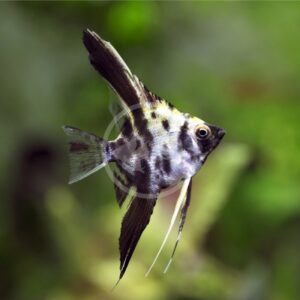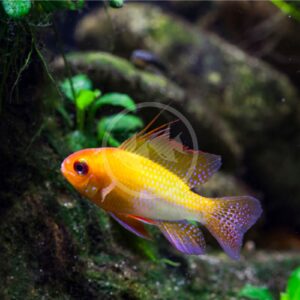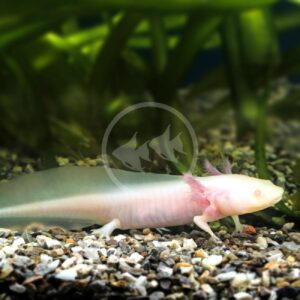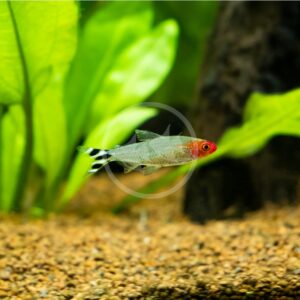Care Level: Advanced
Temperament: Semi-Aggressive
Live Plant Safe: No
General Description: The Tigrinus Catfish, also referred to as the Zebra Shovelnose or Tiger Striped Catfish, is a rare species in the aquarium trade found in the Amazon basin of Brazil and Peru. Often collected and sold as mere “kittens” that are several inches in length, this catfish species may be one that is best left admired in the wild, public aquaria or to the few extremely dedicated aquarists that have the facilities to house an adult or the patience to get it on a prepared diet. On average, an adult Tigrinus catfish in captivity can grow to just over 2 feet in length. The myth that this species, among so many other large fishes, will only grow to the size of the aquarium that they are in is just that – a myth. Juvenile Tigrinus catfish are overall gray in color and will not develop their attractive striped patterning or caudal streamer until they mature. Like many of the other large catfish species, Tigrinus catfish will grow up quicker than you think, making this fish a serious commitment in all aspects of aquatic husbandry (please see ‘Diet and Care Requirements’ below). For its very large adult size however, the Tigrinus catfish is a relatively non-aggressive fish so long as it is not kept with tank mates that can become a meal. We do not recommend keeping any other type of catfish with a Tigrinus catfish because this will likely result in a territorial dispute. Diagnosable differences between male and female Tigrinus catfish are unknown. Note: This species is infrequently available.
Diet Requirements: Tigrinus catfish are fish-eaters by nature, and usually have a poor success rate of converting to anything but a live diet in captivity. Nevertheless, we discourage feeding live fish to Tigrinus catfish because they are often of little nutritional value and increase the risk of introducing disease. Live ghost shrimp or earthworms are better alternatives. For prepared foods, try options such as frozen brine shrimp, mussels, krill, silverside fish, and prawns. Appropriate frozen food options will vary depending on the size of your specimen. Adult Tigrinus catfish can also be fed pieces, or whole, white fish fillets from the grocery store. It is unlikely this species will accept sinking pellet foods. Variety is the spice of life in order to maintain color, immune function and longevity of your fish. Your Tigrinus shovelnose catfish may become greedy and learn to “beg” for food, but feeding only once a day should be exercised for juveniles. Adult specimens may only need to be fed once a week. Obesity is a big problem in large catfish species, which will only be a detriment to their health in the long run. Do not feed any form of mammalian/poultry meat (e.g., beef or chicken) as certain lipids in these cannot be metabolized by the Tigrinus catfish.
Care Requirements: A minimum 90 gallon aquarium with 18″ width is needed at the very least for a small Tigrinus catfish. A more subadult specimen will require a 200+ gallon aquarium. The realistic long term accommodations for a juvenile Tigrinus catfish to mature into a 2 foot adult in length requires a substantial volume of water of at least 350 or more gallons. The more the merrier to allow for natural movement as it would freely in the wild, in addition to accomodate space for other large tank mates. This catfish cannot be put into a biologically immature aquarium. Weekly water changes are necessary to keep water parameters spotless (Nitrates < 10 ppm) as Tigrinus catfish do not like high nitrates and deteriorating water parameters. Equipping the aquarium with several canister filters, or a sump system, is also needed to maintain a healthier environment for this species and combat the amount of waste it produces. A Tigrinus catfish will be relatively indifferent to decor, especially as an adult, but some stacked rocks to create caves for younger specimens to hide, or driftwood, may add some pizzazz to the aquarium. A lot of unobstructed and open swimming space should be of priority, and the aquarium needs to be highly oxygenated for this species. A sandy or fine substrate is required, because gravels can be ingested by more mature specimens and get caught in their delicate gill tissue. Tigrinus catfish are compatible with a wide variety of fish; tank mates should not be aggressive as to nip at their delicate and sensitive whiskers, or too small to be consumed. Tank mates should also not outcompete this catfish in food resources that it may already be reluctant to eat. Tigrinus catfish are solitary, so no more than one should be considered per aquarium. Recommended water conditions, 72-78° F, KH 6-25, pH 6.5-7.5.
Purchase Size:
Note: Your item may not look identical to the image provided due to variation within species. Purchase sizes are approximate.


